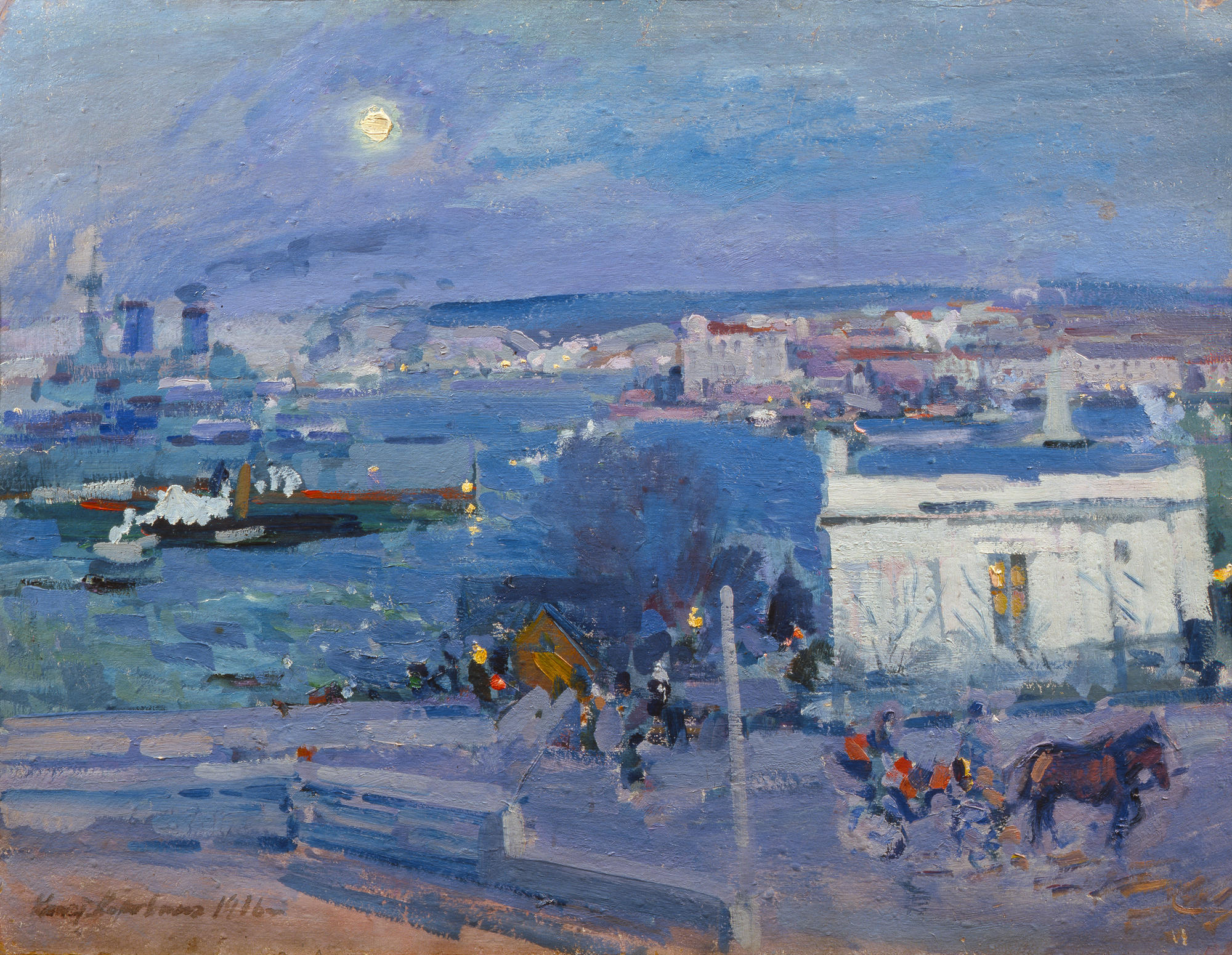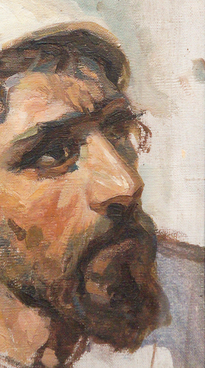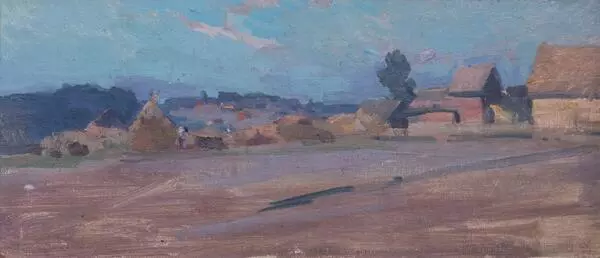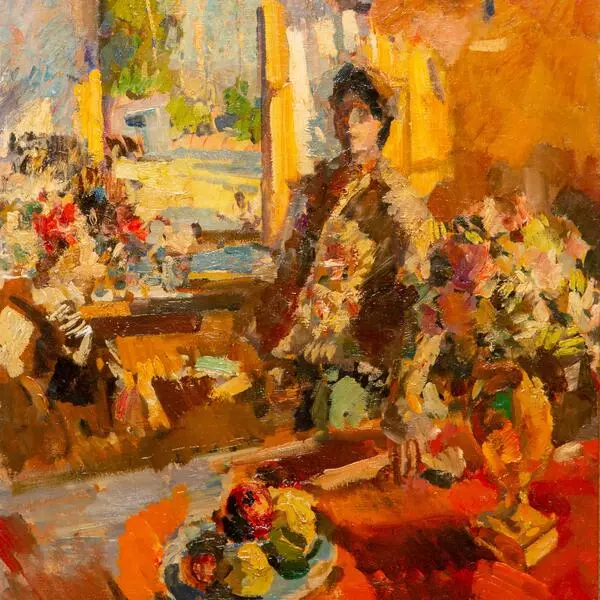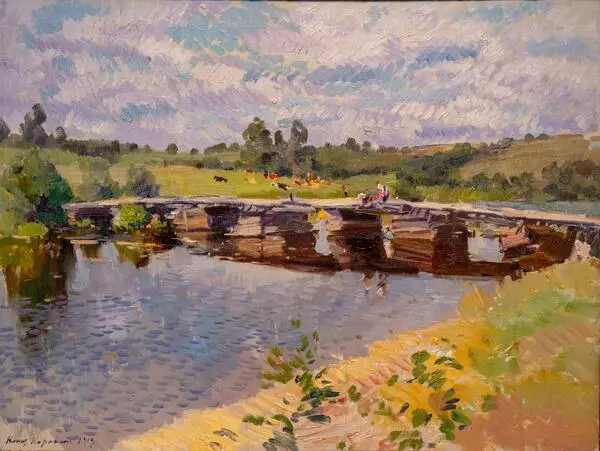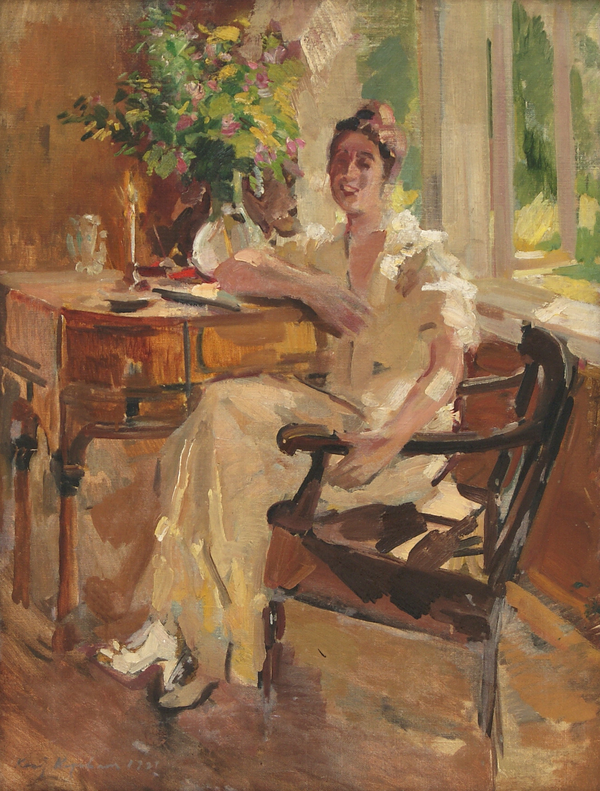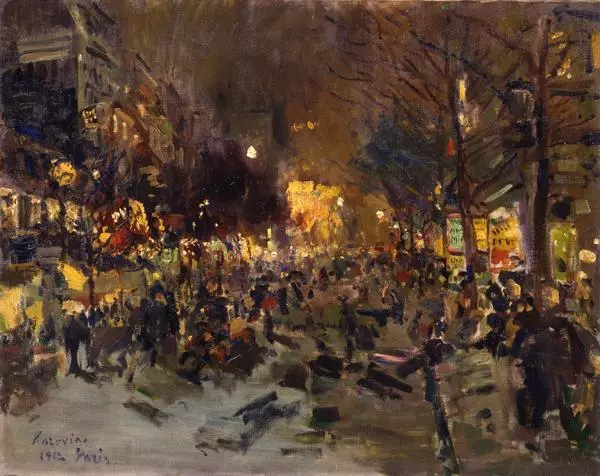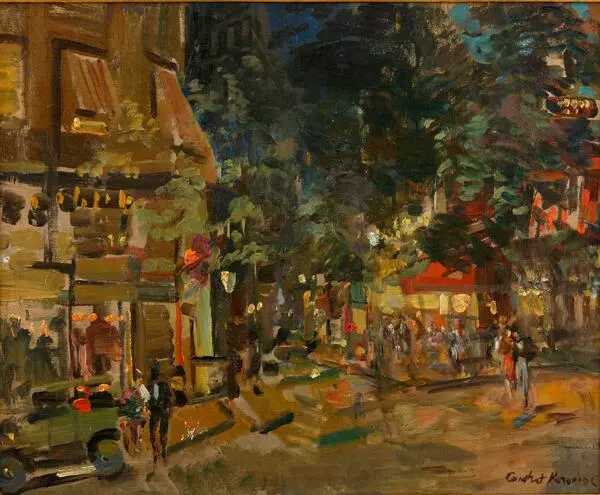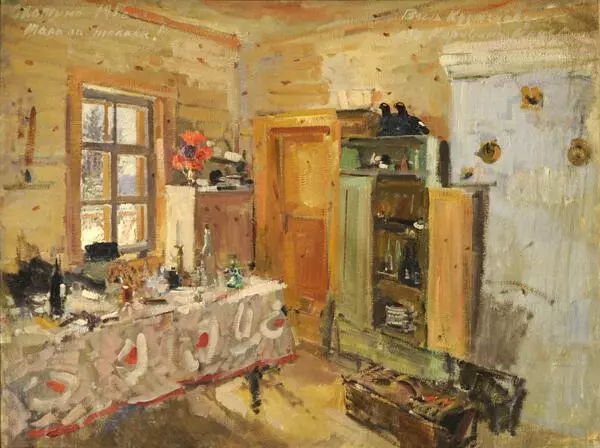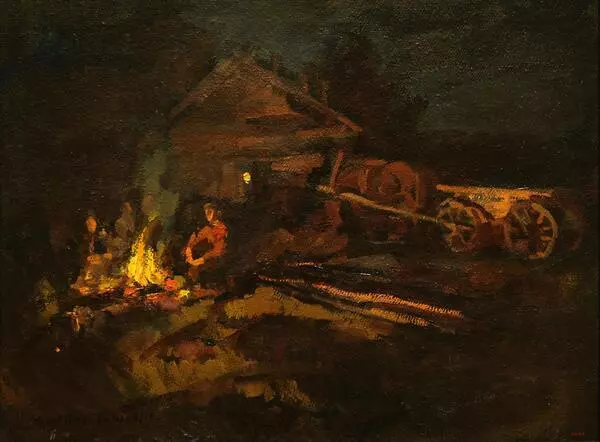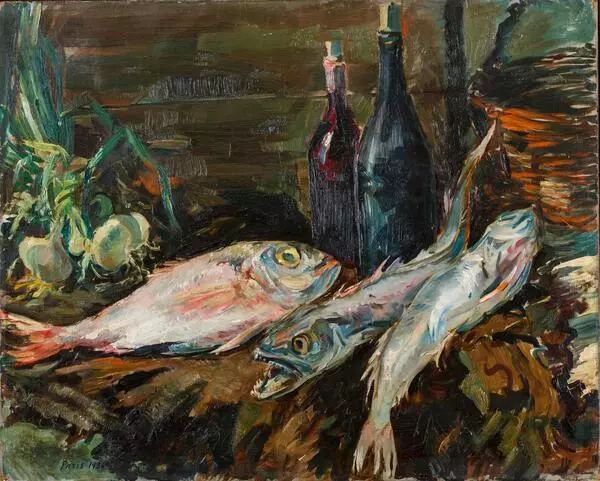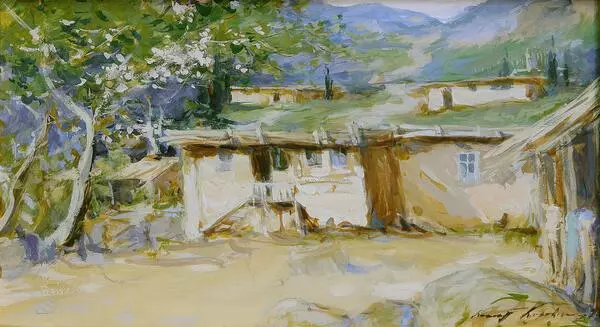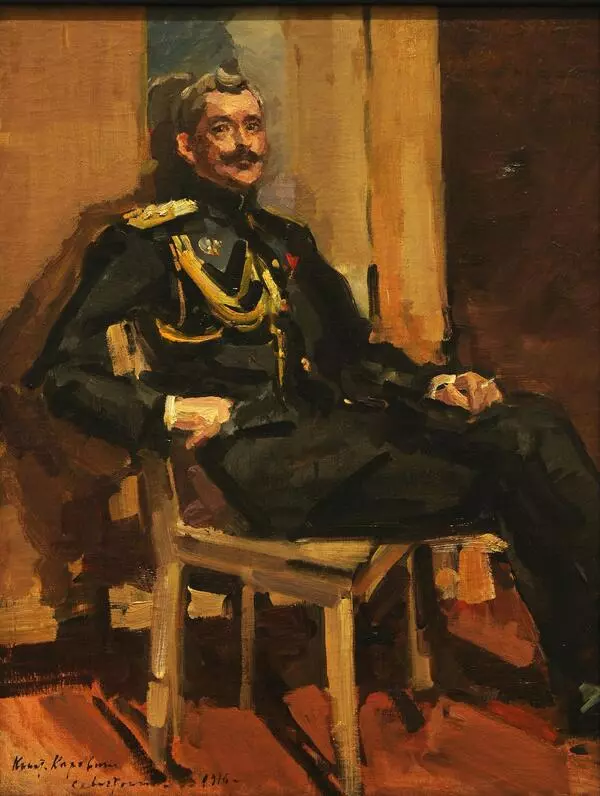Konstantin Alekseyevich Korovin is a Russian painter, scenery designer and decorator, architect, teacher and writer. In 1875, he was a student of Moscow School or Arts, Sculpture and Architecture, where Vasily Perov, Alexey Savrasov and Vasily Polenov were his teachers. He travelled to Paris in 1887, 1892 and 1893, where he became a fan of Impressionism — the artistic style focusing on the artists’ moods and emotions.
Konstantin Korovin was the first Russian artist to start painting not just landscapes, but also portraits and genre pieces in the open air. In his paintings the artist created a colorful symphony, added some poetry and praised life and humans with each of his pieces.
Konstantin Korovin’s painting are full of effervescent joy. He was not only a painter, but also a writer, an expert in music and theatre, and a good singer. His paintings reflect all of his talents.
Korovin painted his nightscape Harbor in Sebastopol in the Crimea in 1916. It belongs to a series of Sebastopol landscapes. The artist made them full of sun and dynamics, the fuss of the everyday life. His paintings depict a convincing image of a southern coastal city of the early 20th century. Konstantin Korovin easily and creatively resolved the complicated task of conveying the volatile play of light and air making it true and recognizable.
The artist depicted the full moon over a quiet Southern Bay or the Harbor (the earlier name). The angle tells us that he was painting from the balcony of Kist hotel on Nakhimov square close to Grafskaya quay. The cold moon in a pale aureole sheds light onto the vibrant azure of the bay and the buildings on the opposite banks.
A little white house by the very quay is a bright spot in the painting. The dockyard and the Admiral building of the maritime hospital at Pavlovsky cape are in the background. On the left, silhouettes of a boat and a battle ship can be seen against the blue-grey waters, the colors are practically mingled. A horse-drawn carriage is in the foreground. In those days, the parking lot for such carriages was close to the hotel. Small bright yellow lamps are twinkling in the night, and the window of the house emits warm light.
Korovin’s landscapes clearly demonstrated a characteristic feature of Russian Impressionism — its ornamentation. Contrary to the French, the artist did not dilute objects, but emphasized their materiality and tangibility; in his paintings, he admired the intense colors and the beauty of volumes.
Konstantin Korovin was the first Russian artist to start painting not just landscapes, but also portraits and genre pieces in the open air. In his paintings the artist created a colorful symphony, added some poetry and praised life and humans with each of his pieces.
Konstantin Korovin’s painting are full of effervescent joy. He was not only a painter, but also a writer, an expert in music and theatre, and a good singer. His paintings reflect all of his talents.
Korovin painted his nightscape Harbor in Sebastopol in the Crimea in 1916. It belongs to a series of Sebastopol landscapes. The artist made them full of sun and dynamics, the fuss of the everyday life. His paintings depict a convincing image of a southern coastal city of the early 20th century. Konstantin Korovin easily and creatively resolved the complicated task of conveying the volatile play of light and air making it true and recognizable.
The artist depicted the full moon over a quiet Southern Bay or the Harbor (the earlier name). The angle tells us that he was painting from the balcony of Kist hotel on Nakhimov square close to Grafskaya quay. The cold moon in a pale aureole sheds light onto the vibrant azure of the bay and the buildings on the opposite banks.
A little white house by the very quay is a bright spot in the painting. The dockyard and the Admiral building of the maritime hospital at Pavlovsky cape are in the background. On the left, silhouettes of a boat and a battle ship can be seen against the blue-grey waters, the colors are practically mingled. A horse-drawn carriage is in the foreground. In those days, the parking lot for such carriages was close to the hotel. Small bright yellow lamps are twinkling in the night, and the window of the house emits warm light.
Korovin’s landscapes clearly demonstrated a characteristic feature of Russian Impressionism — its ornamentation. Contrary to the French, the artist did not dilute objects, but emphasized their materiality and tangibility; in his paintings, he admired the intense colors and the beauty of volumes.
